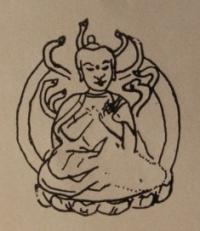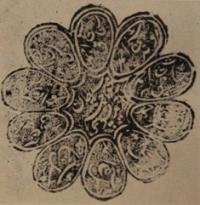You are here
Valikhanov on petroglyphs of Tamgaly-tas.


Informative travel to Petroglyphs in Kazakhstan.
“Like a brilliant meteor, a descendant of the Kyrgyz khans Chokan Valikhanov flashed over the field of oriental studies. Russian orientalists unanimously recognized in the person of his phenomenal phenomenon. In less than thirty years, he did what others could not do in their whole life..."
Academician N.I. Veselovsky.
Trip to cave paintings of Tamgaly-tas.
C.Ch. Valikhanov wrote in 1856: “A spring flood. Or it happens no earlier than March; in the autumn, it becomes so small that in September and October fords are formed that are convenient for cattle, so three fords are known: Oguz-otkel, between the mouths of Chilik and Turgen; Kyz-kechu, or Kyz-utkel, between Issyk and Talgar, slightly below the confluence on the right side of the river.
Chingildy and Tamgaly-utkel, at the tract Tamgaly-tas. Through the last one there is a caravan route from Tashkent to Kuldzha and Semipalatinsk and is called Dzhanaijol (Dzhanaevsky way). ” The second ford was famous for the fact that in 1701 part of the Kalmyks (torgouts) who had fled from the Volga to Dzungaria crossed over l in front of this entry on the margins of Valikhanov’s manuscript: “There is Uch-Aral ford below.
Tamgaly-tas drawings, in 1856, in one of his excursions in the vicinity of Verny, Valikhanov reproduced in three sketches. In one of them he gave a general view of a huge rock with numerous images and inscriptions.
On the first in the upper right corner, a close-up depicts the Buddha Man-La, made with the same clear expressiveness as in the original, with all the details of the costume and headgear. The following inscription is made under the picture: “Tamgaly-Tas stones ashore Or in the Kapchagay tract, 30 versts below the Ili picket” (the current city of Iliysk) (Kapashagai, note A.P.).
In the upper left corner there are outlines of the second and third stones with inscriptions in the Tibetan language, slightly lower with a small stroke - the contours of three buddhas, then two more buddhas, but placed on different planes.
Valikhanov handed over the images of the three buddhas in close-up in the second sketch with detailed details of all the attributes. Finally, in the third sketch, Valikhanov reproduced the image of a magician performing a rite of spell with nine snakes.
Authority:
“C.Ch. Valikhanov. " Collected works in five volumes. Volume V. Graphic heritage. Publishing house "Science", Kazakh SSR, Alma-Ata, 1972.
Photos by
Alexander Petrov.







